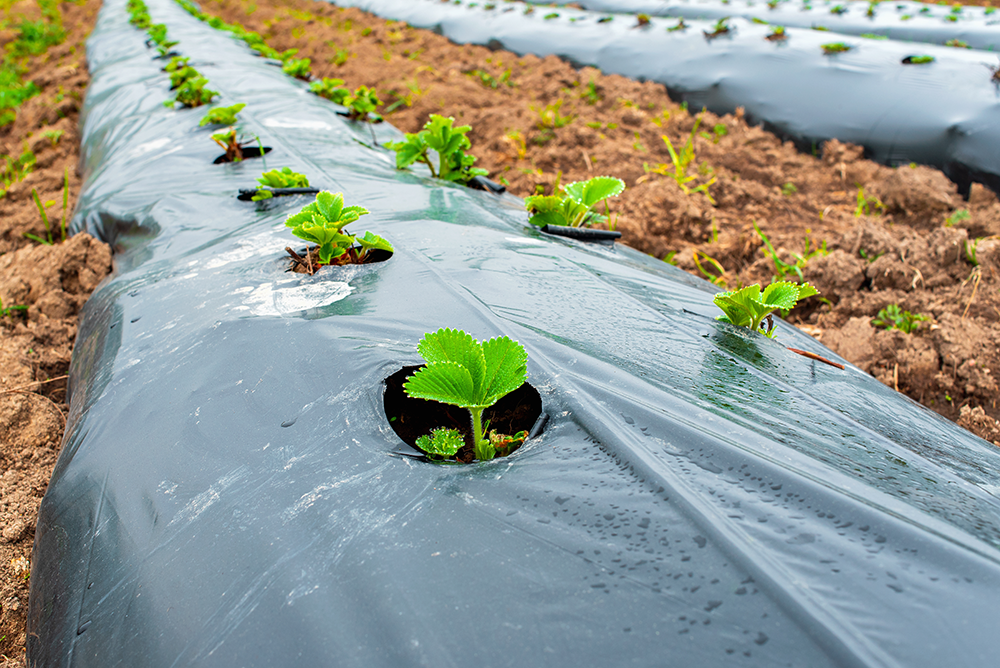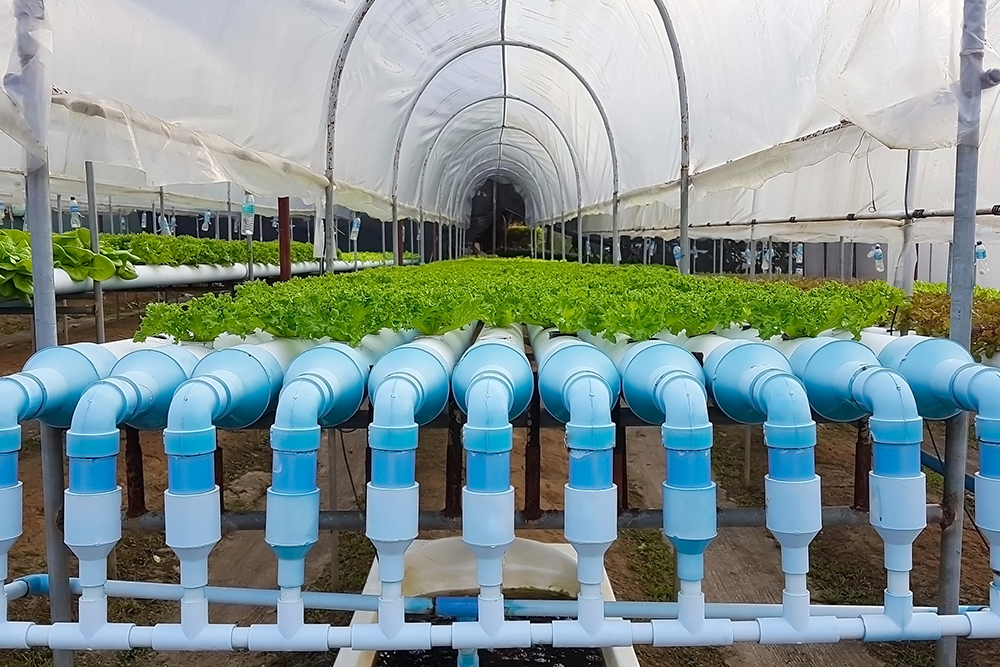Select Your Country/Region
Current Region:
 USA (EN)
USA (EN)
Choose a different country or region to see the content specific to your location

Hydroponics: Plants grown in hydroponic systems typically grow faster and yield higher than those grown in soil gardening. This is because nutrients are delivered directly to the plant roots in a water-based solution, allowing for faster growth without the energy expense of searching for nutrients in the growing medium (soil).
The controlled environment ensures that plants receive the optimal conditions for growth, which can result in faster growth cycles and higher overall productivity.
Soil: Plants growing in soil may take longer to mature because they rely on natural processes to access nutrients. The root systems need to spread out and search for nutrients within the soil, which can slow down their growth. However, the diversity of organic matter in the soil can help some crops achieve rich flavors, and soil-based systems are well-suited to a wide range of crops.
Hydroponics: One of the key advantages of growing hydroponically is its water efficiency. This method reduces water consumption by up to 90% compared to soil-based farming. The water used in hydroponic systems is typically mixed with nutrients, which plants can absorb directly without the waste that often occurs in soil-based irrigation.
Soil: In soil-based systems, water usage tends to be higher because of evaporation and the need for deeper irrigation. Soil is less efficient at holding and distributing water compared to hydroponic systems, which can lead to higher overall water consumption. Additionally, overwatering or underwatering can be a concern in large, outdoor soil-based setups.
Hydroponics: One of the most significant advantages of hydroponics is complete control over nutrient delivery. Growers can precisely control the nutrient mix, ensuring that plants receive exactly what they need at each growth stage.
By adjusting the pH levels and electrical conductivity (EC) of the nutrient solution, hydroponic growers can optimize conditions for plant growth. However, this requires a good understanding of plant biology and careful monitoring to avoid nutrient imbalances.
Soil: In traditional soil-based growing, nutrients are naturally available in the soil but are often more difficult to manage. Soil conditions can vary from year to year, and nutrient availability is often affected by microbial activity, organic matter decomposition, and other factors. While some crops thrive in nutrient-rich soil, others may struggle without additional fertilizers and amendments.
Hydroponics: Hydroponic systems are ideal for small spaces and indoor environments, especially in urban areas. These systems can be set up vertically or even indoors, allowing growers to maximize limited space.
This makes hydroponics a great option for urban farming, rooftop gardens, or greenhouses where traditional soil-based growing may not be feasible. Systems like deep water culture maximize urban farming potential.
Additionally, because hydroponic systems are typically closed-loop, they can be managed in climate-controlled environments.
Soil: Growing plants in soil generally requires more space, as it’s often best suited for outdoor environments, large gardens, or large greenhouses. Soil-based systems also require proper soil preparation, and larger outdoor areas may need special attention to environmental factors like weather, pests, and diseases.
Hydroponics: Hydroponic growing systems require regular monitoring of factors like pH levels, EC (electrical conductivity), and nutrient solution levels. Keeping everything in balance can be time-consuming, especially for beginners. However, tools can automate the nutrient mixing process, making it easier to maintain proper nutrient ratios. Maintenance also involves ensuring that the water quality is high and that the system is free from blockages.
Soil: Soil-based systems are easier to set up but can be more labor-intensive in the long run. Tasks like weeding, watering, and managing soil health through composting or fertilization are more hands-on. Soil-based growing techniques are often less automated than hydroponic systems, and pest and disease management can be more challenging.
Hydroponics: One advantage of hydroponics is that it typically faces fewer pests and diseases. Since hydroponic systems are enclosed and sterile, there are fewer opportunities for pests to invade. However, diseases like root rot can occur if water quality or system hygiene isn’t properly managed.
Soil: Soil tends to harbor more pests, diseases, and weeds, which can be a challenge in maintaining healthy crops. Organic and traditional farming often requires regular pesticide or herbicide applications to combat these problems, increasing the need for pest management strategies. Insects, fungi, and bacteria can thrive in soil, potentially affecting plant health.
Hydroponics: The initial setup cost for hydroponic systems can be high because of the need for specialized equipment, including grow lights, pumps, reservoirs, and nutrient delivery systems. However, hydroponic systems often lead to long-term savings in water usage and can produce faster growth, resulting in higher yields and more efficient use of space. Over time, hydroponics can become more cost-effective as it maximizes space and reduces waste.
Soil: Soil-based growing typically has a lower startup cost, but ongoing expenses like fertilizers, irrigation equipment, and soil health amendments can rise over time. Depending on the scale of the operation, soil systems can be more affordable to start, but may require greater ongoing investment in soil quality and pest management.
Hydroponics: The flavor of hydroponic plants can be influenced by the quality of the nutrient solution and the growing conditions.
Soil: The natural interactions between the plant’s roots and the soil’s organic matter help create a depth of flavor that many people associate with the best-tasting produce. Soil-grown crops tend to have better taste, especially for fruits and vegetables that rely on soil for their nutrients.

Despite the differences in how nutrients are delivered in these two methods, Dosatron can seamlessly integrate into both, ensuring that plants receive the right amounts of nutrients for healthy, vigorous growth.
In hydroponics, where plants rely entirely on nutrient-rich water, the Dosatron plays a pivotal role in mixing and delivering the nutrient solution accurately. This ensures that all plants, whether grown in an indoor setup or vertical farming system, receive a consistent and optimized supply of nutrients. Hydroponic systems don’t have the buffering capacity of soil, so precision is essential.
Dosatron offers that precision by automatically injecting the right concentration of fertilizers directly into the water, ensuring plants thrive without the risk of over or under-fertilization.
In soil fertigation, Dosatron operates similarly by injecting fertilizers into irrigation water, allowing nutrients to reach plants through drip systems or sprinklers. Whether you’re delivering nutrients to the root zone in a small garden or over a larger area in a field, Dosatron ensures that the nutrients are evenly mixed and efficiently absorbed.
In larger-scale agricultural systems, it helps reduce the need for manual mixing and application, saving both time and labor, while improving overall nutrient uptake.